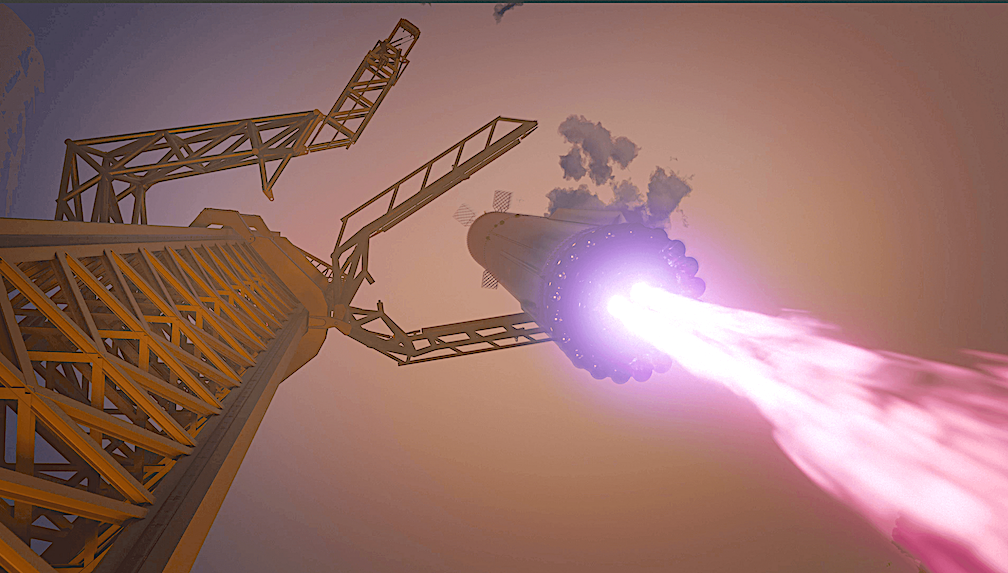
The sixth flight test of Starship is targeted to launch as early as Monday, November 18 following the not-too-distant Fifth Flight test conducted on September 10
A live webcast of the flight test will begin about 30 minutes before liftoff, which you can watch here and on X @SpaceX. You can also watch the webcast on the new X TV app. The 30-minute launch window will open at 4:00 p.m. CT. As is the case with all developmental testing, the schedule is dynamic and likely to change, so be sure to check in here and stay tuned to our X account for updates.
Starship’s fifth flight test was a seminal moment in iterating towards a fully and rapidly reusable launch system. On the first attempt, the Super Heavy booster successfully returned to the launch site and was caught by the chopstick arms of the launch and catch tower at Starbase. Starship’s upper stage went on to demonstrate several improvements, resulting in a controlled entry and high accuracy splashdown at the targeted area in the Indian Ocean.

BUILDING ON THE SUCCESS OF STARSHIP’S SECOND FLIGHT TEST
The next Starship flight test aims to expand the envelope on ship and booster capabilities and get closer to bringing reuse of the entire system online. Objectives include the booster once again returning to the launch site for catch, reigniting a ship Raptor engine while in space, and testing a suite of heatshield experiments and maneuvering changes for ship reentry and descent over the Indian Ocean.
The success of the first catch attempt demonstrated the design feasibility while providing valuable data to continue improving hardware and software performance. Hardware upgrades for this flight add additional redundancy to booster propulsion systems, increase structural strength at key areas, and shorten the timeline to offload propellants from the booster following a successful catch. Mission designers also updated software controls and commit criteria for the booster’s launch and return.
Analogous to the fifth flight test, distinct vehicle and pad criteria must be met prior to a return and catch of the Super Heavy booster, which will require healthy systems on the booster and tower and a final manual command from the mission’s Flight Director. If this command is not sent prior to the completion of the boostback burn, or if automated health checks show unacceptable conditions with Super Heavy or the tower, the booster will default to a trajectory that takes it to a landing burn and soft splashdown in the Gulf of Mexico. We accept no compromises when it comes to ensuring the safety of the public and our team, and the return will only take place if conditions are right.
The returning booster will slow down from supersonic speeds, resulting in audible sonic booms in the area around the landing zone. Generally, the only impact to those in the surrounding area of a sonic boom is the brief thunder-like noise with variables like weather and distance from the return site determining the magnitude experienced by observers.
Starship’s upper stage will fly the same suborbital trajectory as the previous flight test, with splashdown targeted in the Indian Ocean. An additional objective for this flight will be attempting an in-space burn using a single Raptor engine, further demonstrating the capabilities required to conduct a ship deorbit burn prior to orbital missions.
Several thermal protection experiments and operational changes will test the limits of Starship’s capabilities and generate flight data to inform plans for ship catch and reuse. The flight test will assess new secondary thermal protection materials and will have entire sections of heat shield tiles removed on either side of the ship in locations being studied for catch-enabling hardware on future vehicles. The ship also will intentionally fly at a higher angle of attack in the final phase of descent, purposefully stressing the limits of flap control to gain data on future landing profiles. Finally, adjusting the flight’s launch window to the late afternoon at Starbase will enable the ship to reenter over the Indian Ocean in daylight, providing better conditions for visual observations.
Future ships, starting with the vehicle planned for seventh flight test, will fly with significant upgrades including redesigned forward flaps, larger propellant tanks, and the latest generation tiles and secondary thermal protection layers as we continue to iterate towards a fully reusable heat shield. Learnings from this and subsequent flight tests will continue to make the entire Starship system more reliable as we close in on full and rapid reusability.
